Romanian Food Dishes: Basic Overview
Common Ingredients
Common Cooking Methods
Courses
Meals
Key Taste
Eating Etiquette
Meal Presentation
Culinary Festivals
Influence and Fusion
Popular Types of Romanian Dishes
-
Soups and Stews
Soups and stews make up a significant proportion of Romanian dishes.
These food offerings are hearty and savory items for the main course.
These dishes are typically prepared with vegetables, legumes, meat, and a liberal amount of herbs and spices.
Romanians always serve stews with bread, using pieces of bread to mop up the savory sauce.
-
Grilled and Barbecued Dishes
There are many grilled dishes in Romania; they serve as entrees, snacks, or street food.
These grilled dishes can be made with meat sausage.
To prepare these dishes, Romanians often marinate the ingredients in a blend of various herbs and spices before grilling.
-
Cakes and Pastries
There are many types of cakes and pastries in Romania.
These dishes are usually made with wheat flour, milk, butter, sugar, fruits, and spices.
Certain Romanian cakes and pastries are specifically designed for special holidays and occasions.
Romanian dishes are specialties widely prepared and enjoyed in Romania, a country that straddles various regions of Europe. Interestingly, Romanian cuisine has many things in common with Turkish culinary delights due to cultural and historical ties.
Speaking of culinary influences, Turkish specialties play a role in shaping Romanian dishes due to the spread of Ottoman cuisine. Central European countries, such as Hungarian delicacies and Austrian delicacies, are also essential factors.
Romanian dishes have simple and homely qualities, as they rely on local and easily accessible ingredients. There are many hearty and nourishing specialties in local cuisine.
Continue reading, and I will show you what makes traditional Romanian food special, including its main characteristics, global popularity, and healthy aspects.
Next, I will dive into the 20 most common dishes in Romania before providing insight into the general cuisine and suggesting beverages for food and drink pairings.
20 Most Popular Romanian Dishes with Filters
20 well-known dishes in Romania are waiting for you to discover! Use advanced filters to navigate this content more easily; there are options regarding alphabetical sorting, main ingredients, taste, cooking methods, dish types, courses, and global popularity.
Remember to check out the additional filters based on specific culinary styles, such as traditional, national, and street food options.
Sarmale
- National
- Traditional
Sarmale is a classic Romanian dish in the form of stuffed cabbage rolls. Hailing from a similar Ottoman dish called sarma, it is a must-have specialty for many special occasions in the country, such as weddings, Christmas, and New Year.
People create sarmale by combining minced beef or pork, onions, rice, and spices and wrapping the mixture in cabbage or vine grape leaves. The rolls are then cooked for a few hours in tomato-based broth.
Vegan sarmale replaces minced beef with ground nuts, shredded carrots, and chopped mushrooms. Both traditional and plant-based versions go well with sour cream and a side of mămăligă (a staple dish similar to polenta).
Mămăligă
- National
- Traditional
Mămăligă, also known as Romanian polenta, is a popular staple dish made with yellow cornmeal, water or stock, and salt. Some richer versions feature butter and herbs.
Originally a type of cheap peasant food, mămăligă is now a comforting dish beloved by all Romanians. Though similar to Italian polenta in some aspects, mămăligă often has a firm consistency and a circular, dome-like shape.
In the past, mămăligă was produced from millet flour, known to locals as pulmentum, before maize was introduced to Europe in the 16th century.
Bulz, also known as urs de mămăligă, is a Romanian dish by baking mămăligă and cheese together in the oven, then topping the mixture with bacon and eggs.
Mititei
- National
- Street Food
- Traditional
Mititei, also known as mici, is a famous Romanian dish of grilled skinless sausage or ground meat roll. Its name means “tiny/ little ones,” referring to the small shape of the sausage.
The preparation of mititei starts with mixing a blend of lamb and beef with various spices, including pepper, garlic, thyme, and paprika. The meat mixture is then formed into a cylindrical, finger-sized shape before being grilled.
Legend has it that mititei were invented in the late 1800s by a cook at a pub named “La o idee” (“The Idea”). He ran out of casings to make sausage, so he just grilled the sausage filling directly and served it.
However, another theory attributes mititel to grilled dishes in Ottoman cuisine. Anyway, the grilled skinless sausage dish is a popular dish for outdoor gatherings and warm-weather festivities in Romania.
Ciorbă de Burtă
- Traditional
Ciorbă de burtă, translating to “tripe soup,” is a sought-after sour soup in Romanian cuisine. The term ciorbă refers to a category of sour soups in local cuisine.
Several local food journalists hail ciorbă de burtă as having the most complex and demanding manner of preparation in all Romanian dishes.
The main ingredients of ciorbă de burtă are beef tripe, vegetables (like carrots, onions, and celery), vinegar or fermented wheat bran, egg yolks, and heavy cream. These diverse ingredients result in a complex flavor profile with tanginess, savoriness, and sweetness.
Ciorbă de burtă is a beloved remedy for hangovers and is commonly served in restaurants and households.
Zacuscă
- Traditional
Zacuscă is a thick Romanian vegetable spread made from roasted eggplant, tomato paste, sautéed onions, paprika, and roasted sweet peppers.
Locals often serve zacuscă on bread or as an accompaniment to grilled meats and cheese. Its name came from the Slavic language, meaning “snack,” “breakfast,” or “appetizer.”
Zacuscă is typically made in a large quantity after every fall harvest to preserve the veggies. In nations with an Orthodox Christian majority, this vegetable spread is very popular during fasting seasons when people refrain from eating meat, eggs, or dairy.
Salată de Vinete
- Traditional
Salată de vinete, often known as ust vinete, is a type of eggplant dip or eggplant salad in Romania. It boasts a smooth texture and a distinctive smoky flavor that goes well with bread and grilled meat.
Salată de vinete is primarily made from roasted eggplants, which are peeled, finely chopped or mashed, and mixed with diced onions, sunflower or olive oil, garlic, and lemon juice or vinegar.
Many Americans refer to Romanian eggplant dip as potlagel since the eggplant is known as patlagea in the old Romanian language. However, salată de vinete is the correct name in modern Romanian.
Cozonac
- Traditional
Cozonac, also known as Kozunak, is a well-known sweet bread in Romanian. It is also famous in other Southeastern European countries, particularly Romania, Serbia, Greece, Macedonia, and Bulgaria.
Cozonac is traditionally made for Easter and major holidays, such as Christmas or New Year’s Eve. Its preparation involves coiling the citrus-scented leavened dough around a nut-based filling, shaping it into a spiral shape, and baking until the bread is soft and fluffy.
On Europe Day 2006, Romania chose cozonac to represent this country in the Café Europe project of the Austrian presidency of the European Union.
Papanași
- Traditional
Papanași is a beloved Romanian dessert that is traditionally served hot with sour cream and fruit jam like blueberry or sour cherry. Its name might be derived from the Latin word pappa or papa, which signifies “children’s food.”
Typical papanași consists of fried or boiled doughnuts made from a mixture of urdă (Romanian cottage cheese), eggs, flour, and lemon zest. This combo creates a soft, creamy, and tangy treat.
Ardei Umpluți
- Traditional
Ardei umpluți is a classic Romanian dish made by stuffing bell peppers with various savory ingredients. Popular options include minced meat (usually pork, beef, or a mix of both), rice, onions, and various herbs and spices.
Romanian stuffed peppers are simmered in tangy tomato sauce and served with bread and sour cream or yogurt on the side. This stuffed dish originated in Ottoman cuisine and offers many different variations throughout Central and Southeast Europe.
Cașcaval Pane
- Street Food
- Traditional
Cașcaval pane is a renowned Romanian appetizer and snack consisting of breaded and deep-fried cheese slices. Its preferred ingredient is cașcaval, a semi-hard yellow cheese similar to cheddar or Gouda.
Think of cașcaval pane as mozzarella sticks in Romania. Locals usually enjoy this golden and gooey snack alongside garlic sauce, mămăligă, fried potatoes, salads, or a glass of pilsner.
Drob de Miel
- Traditional
Drob de miel, often shortened to drob, is an essential lamb dish for Easter in Romania. It is prepared by finely chopping lamb offals, eggs, herbs, green onions, and soaked bread, mixing these ingredients together, encasing the mixture in a lamb’s stomach (optional), and baking it.
The liver, heart, kidneys, and lungs of a young sheep are the must-have ingredients of drob de miel. While this haggis-like dish has many regional variations, lamb offal is an irreplaceable component.
The reason is that the lamb represents Christ’s sacrifice for humanity’s redemption, which is an important theme for Easter. Drob de miel is a rich and savory dish that is often thinly sliced and served cold with pickles and bread.
Tochitură
- Traditional
Tochitură is an easy Romanian dish prepared by cooking pork or beef cubes in their own fat and, in some cases, a small amount of tomato sauce. Its name was derived from the verb “a topi,” meaning “to slow cook meat in fat.”
While tochitură is often categorized as a stew, it has little liquid, especially when this pork dish excludes tomato sauce. Romanians usually enjoy tochitură with mămăligă, sunny-side-up eggs, and cașcaval pane.
Ciorbă de Perișoare
- Traditional
Ciorbă de perișoare a sour Romanian soup that features meatballs (perișoare) made from ground pork and beef, rice, breadcrumbs, and spices. The meatballs are simmered in a tangy broth made sour with lemon juice and vinegar or fermented wheat bran.
Ciorbă de perișoare often includes carrots, celery, and onions, and herbs like parsley or lovage. This tangy and savory soup tastes best when topped with sour cream, extra parsley, and cayenne pepper.
Salată de Boeuf
- Traditional
Salată de boeuf is a Romanian salad prepared with finely diced beef, boiled vegetables, mayonnaise, and murături (Romanian pickled vegetables). It is a common sight at local celebrations, particularly Christmas and New Year’s Eve.
While salată de boeuf has a French-sounding name, many people think that it was actually inspired by a Russian dish called salat Olivje or Olivier salad.
Pasca
- Traditional
Pasca is an Easter bread widely enjoyed in Romania. A hybrid between a cheesecake and panettone, it has a soft outside and a creamy inside.
Pasca is a sweet, yeast-leavened bread often made with a rich dough of eggs, milk, and butter. Its center is filled with a creamy mixture of fresh cheese, sugar, eggs, and sometimes raisins or citrus zest.
Along with drob de miel and cozonac, pasca is an essential part of Eastern celebrations in Romania. This sweet bread is also present under different names in other countries, such as paska in Ukraine.
Plăcintă
- Traditional
Plăcintă is a beloved Romanian pastry that is either round or square. It dates back to ancient Roman times and has experienced remarkably few changes in the preparation method.
To make plăcintă, people prepare a simple dough, roll it thin, fill it with cheese or apples, and bake or fry the dish. Plăcintă is a simple yet addictive snack or a light meal, sometimes accompanied by sour cream or yogurt.
Fasole Bătută
- Traditional
Fasole bătută, also known as fasole făcăluită or icre de fasole, is a creamy bean dip in Romanian cuisine. Locals prepare it by boiling white beans and mashing them with olive oil, caramelized onions, garlic, paprika, and lemon juice.
Fasole bătută is a perfect side dish for sausages, smoked meats, dry-cured ham, and pickles. But its most popular application is to serve as a spread for toasted bread slices.
Frigărui
- Street Food
- Traditional
Frigărui is a well-known Romanian dish of grilled and skewered meat, with pork, chicken, and lamb being popular choices. It shares many similarities with kebabs, which suggests an Ottoman origin.
Before grilling frigărui on skewers, Romanians marinate chunks of meat in a marinade of herbs, spices, oil, and wine or beer (optional). Vegetables like bell peppers, onions, and mushrooms are occasionally threaded onto the skewers, too.
Typical accompaniments for frigărui include mujdei de usturoi (a Romanian garlic sauce), salads, and mămăligă.
Pleșcoi Sausage
- Traditional
Pleșcoi sausage, known locally as cârnaţii de Pleşcoi, is a famous type of sausage in Romania. It is a specialty hailing from the village of the same name in Buzău County in southeastern Romania.
Pleșcoi sausage is prepared with beef, mutton, paprika, garlic, and summer savory. These ingredients are hand-minced and mixed according to a strict ratio, creating a uniquely savory and spicy taste.
Romanians often grill Pleșcoi sausage and serve it with bread and mustard. This Romanian sausage is only made in small batches, so don’t pass up any opportunity to taste it.
Salam de Biscuiți
- Traditional
Salam de biscuiți is a Romanian no-bake dessert shaped like salami slices. It is particularly famous during the Christmas season.
Salam de biscuiți consists of cocoa powder, sugar, butter, crushed cookies, rum extract, and Turkish delight. The mixture is then shaped into a salami-like log and chilled until firm.
Once sliced, the pieces resemble salami slices, with the biscuit pieces mimicking the fat found in traditional salami. While eggs are an acceptable addition, pasteurized eggs are a safer choice than regular whole eggs since there is no cooking with heat when making salam de biscuiți.
Apparently, salam de biscuiți emerged during the 1970s or 1980s as a result of food shortages.
You have just learned about the most popular dishes in Romania, so now let’s shift to the general features of the country’s cuisine.
What Is Special About Romanian Cuisine?
To foster your understanding of Romanian cuisine, I have included the following vital aspects of local dishes.
Over the centuries, Romania has been influenced by various cultures and empires, including the Romans, the Ottoman Empire, and the Austro-Hungarian Empire.
Ottoman influence is particularly strong and evident in many aspects, such as stuffed dishes, paprika, and grilled meat.
In addition, Romanians also have culinary interactions with Germany and various Slavic countries in the Balkans and Eastern Europe.
Romania’s geography includes many types of terrain, namely mountains, hills, and fertile plains. This feature facilitates local inhabitants to harvest and cultivate a wide range of agricultural products, such as fruits, vegetables, cereals, meat, and dairy products.
For centuries, the majority of Romanians lived in rural areas and led agrarian lifestyles, which emphasized self-sufficiency and the use of locally available ingredients.
As a result, simple, hearty, and energy-rich dishes for the working class account for a large part of Romanian dishes.
The Romanian Orthodox faith plays a significant role in shaping Romanian cuisine through festive dishes and fasting periods. Christmas and Easter necessitate the preparation of special dishes while fasting leads to a variety of meat-free dishes.
The distinct seasons in Romania have historically required the preservation of food for winter months. As a result, preservation techniques, such as pickling, smoking, and fermentation, are integral to Romanian cuisine.
If you’re interested in pairing Romanian food with local beverages to improve the dining experience, the next section won’t let you down.
What Beverages to Pair With Romanian Dishes?
Many Romanian dishes are ideal accompaniments for the four types of beverages below.
Spirits
There are many types of spirits in Romania, with țuică, a plum-based spirit, considered the national drink. Țuică and other spirits go well with hearty and savory dishes, including sarmale, mititei, and tochitură.
Wine
As one of the world’s largest wine-producing countries, Romania offers many types of wine to pair with lightly seasoned dishes. A few popular choices are ciorbă de burtă, salată de vinete, cașcaval pane, and ciorbă de perișoare.
Beer
Romanian beer is a favored beverage for light dishes of various kinds, such as mămăligă. Meaty or grilled dishes like mititei, frigărui, and Pleșcoi sausage also agree with beer.
Soft Drinks
There are many exciting soft drinks with light or fruity flavors in Romania, such as socată, which is made from elderflowers. Casual dishes are the best accompaniments for soft drinks, such as plăcintă, salam de biscuiți, and drob de miel.
Do my recommended Romanian specialties capture your interest? Tell me about your encounter with Romanian cuisine in the comment section. I’m eager to hear your tale, and I’m sure other readers are, too! Share this list of Romanian dishes with your friends!


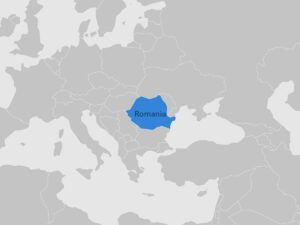









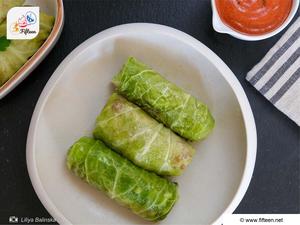
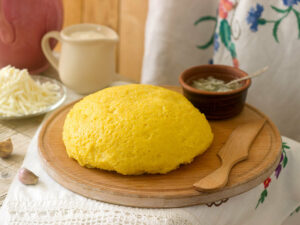
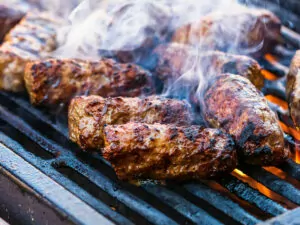
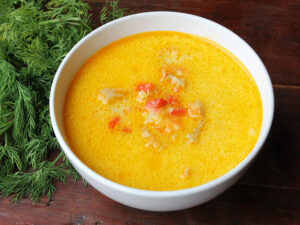
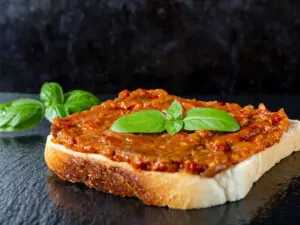
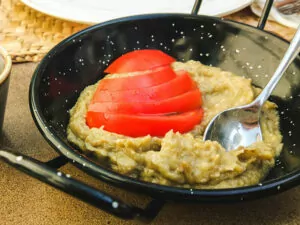
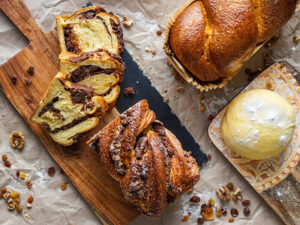

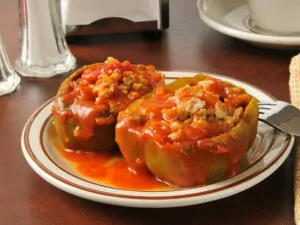
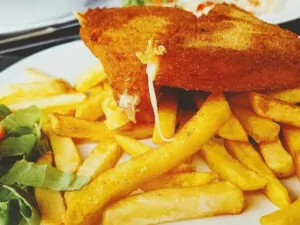
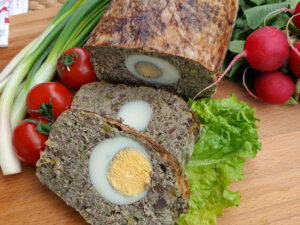
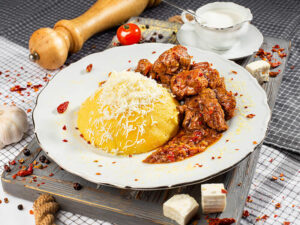
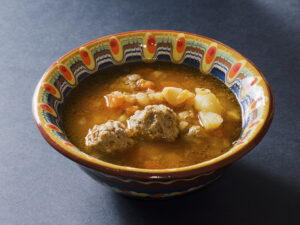
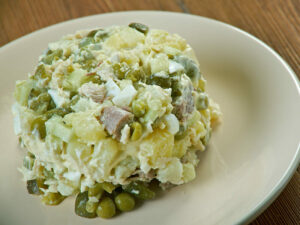
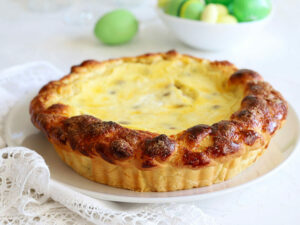
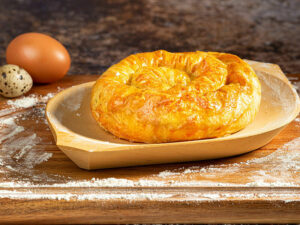
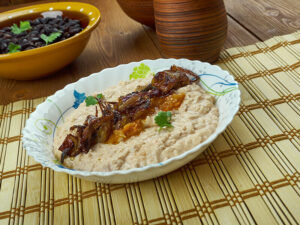
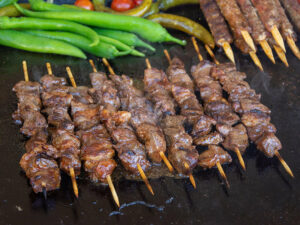
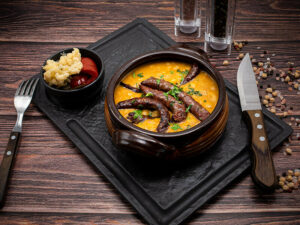
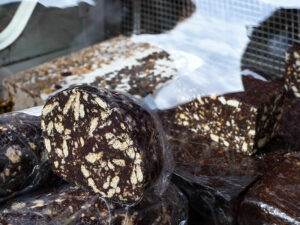
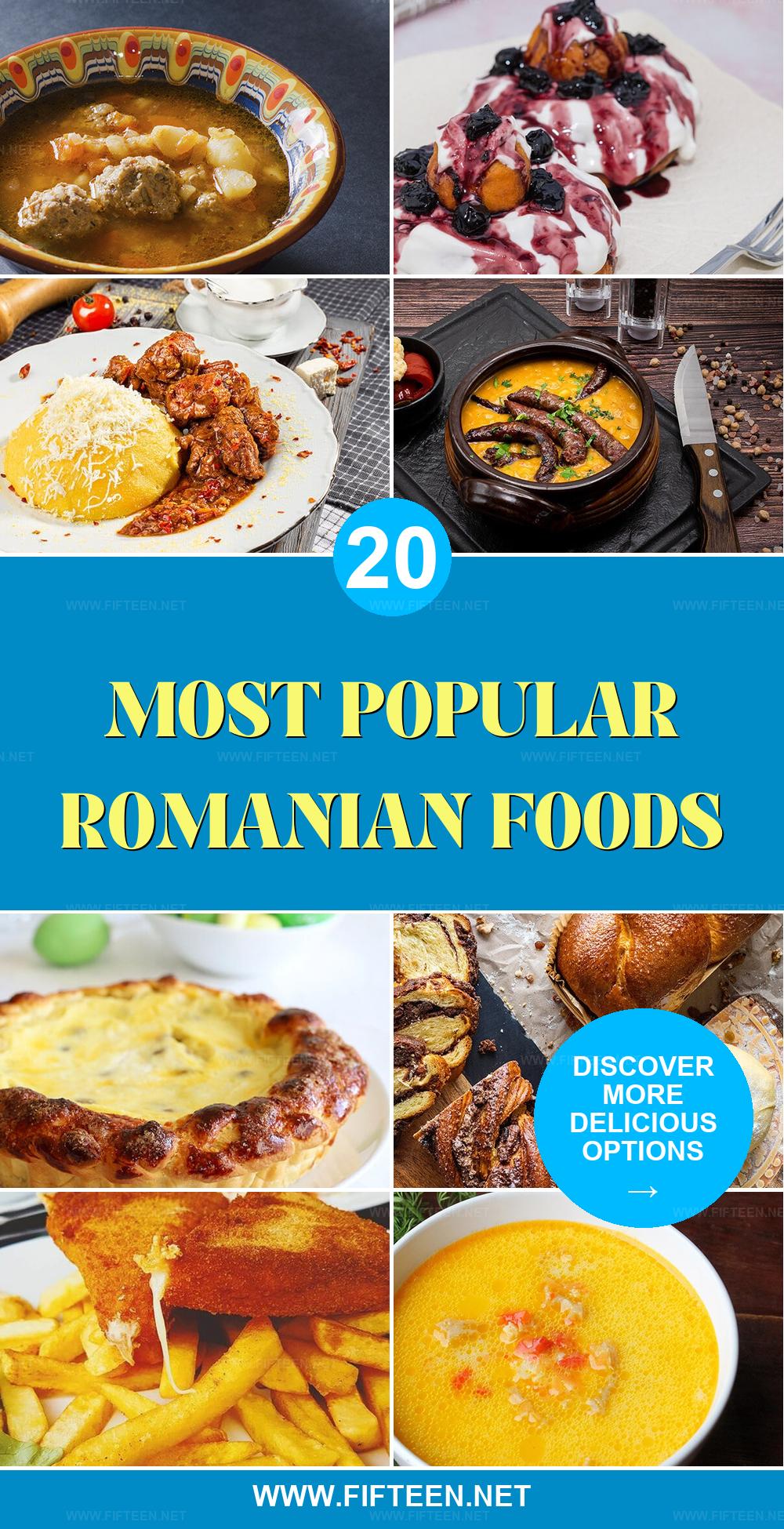
Jamie Scott
Editor in Chief, Senior Content Writer
Expertise
Home Cooking, Meal Planning, Recipe Development, Baking and Pastry, Food Editor, Cooking-video Maker, Western Food Evaluation Expert
Education
Le Cordon Bleu College of Culinary Arts
Local Community College, New York, NY
Jamie Scott is a skilled culinary expert and content creator specializing in Western cuisine. With over 15 years in the culinary field and formal training from Le Cordon Bleu, Paris, Jamie deeply understands how to blend nutrition with delicious flavors. His passion for cooking matches his commitment to making healthy eating accessible and enjoyable.
On Fifteen.net, Jamie brings a fresh perspective to classic dishes and beverages, offering readers insightful recipes, cooking tips, and a fresh view on meal planning that emphasizes taste, health, and simplicity.